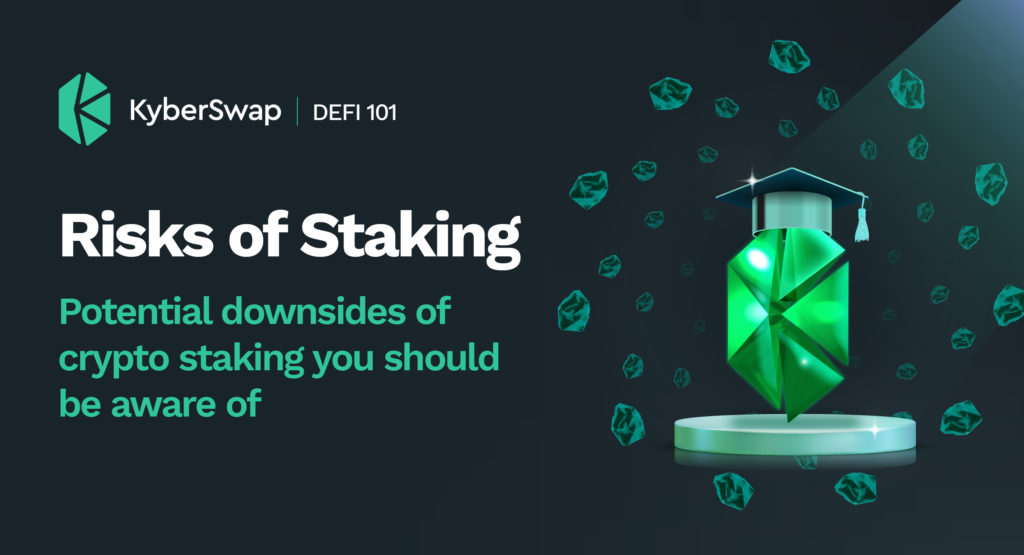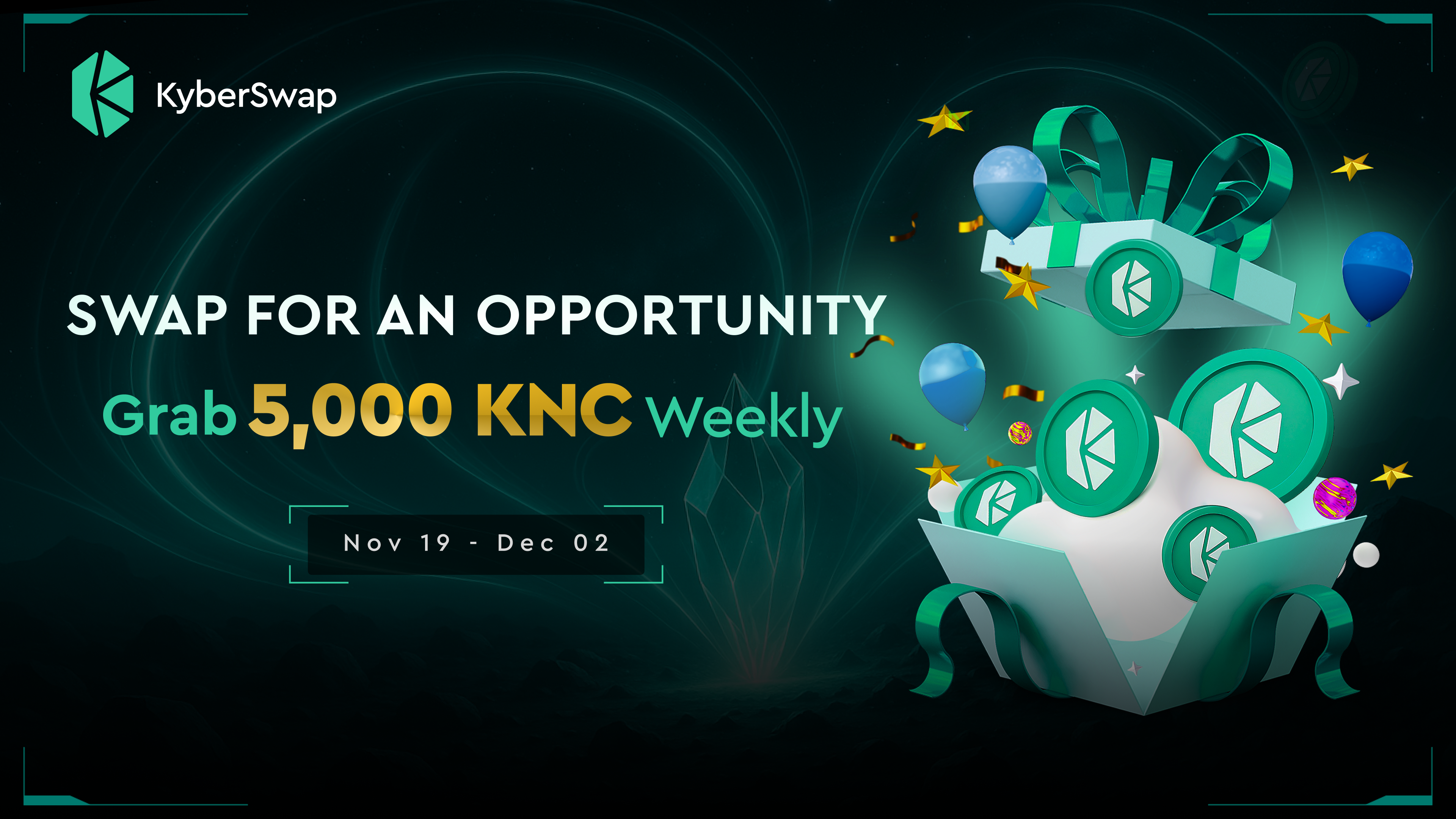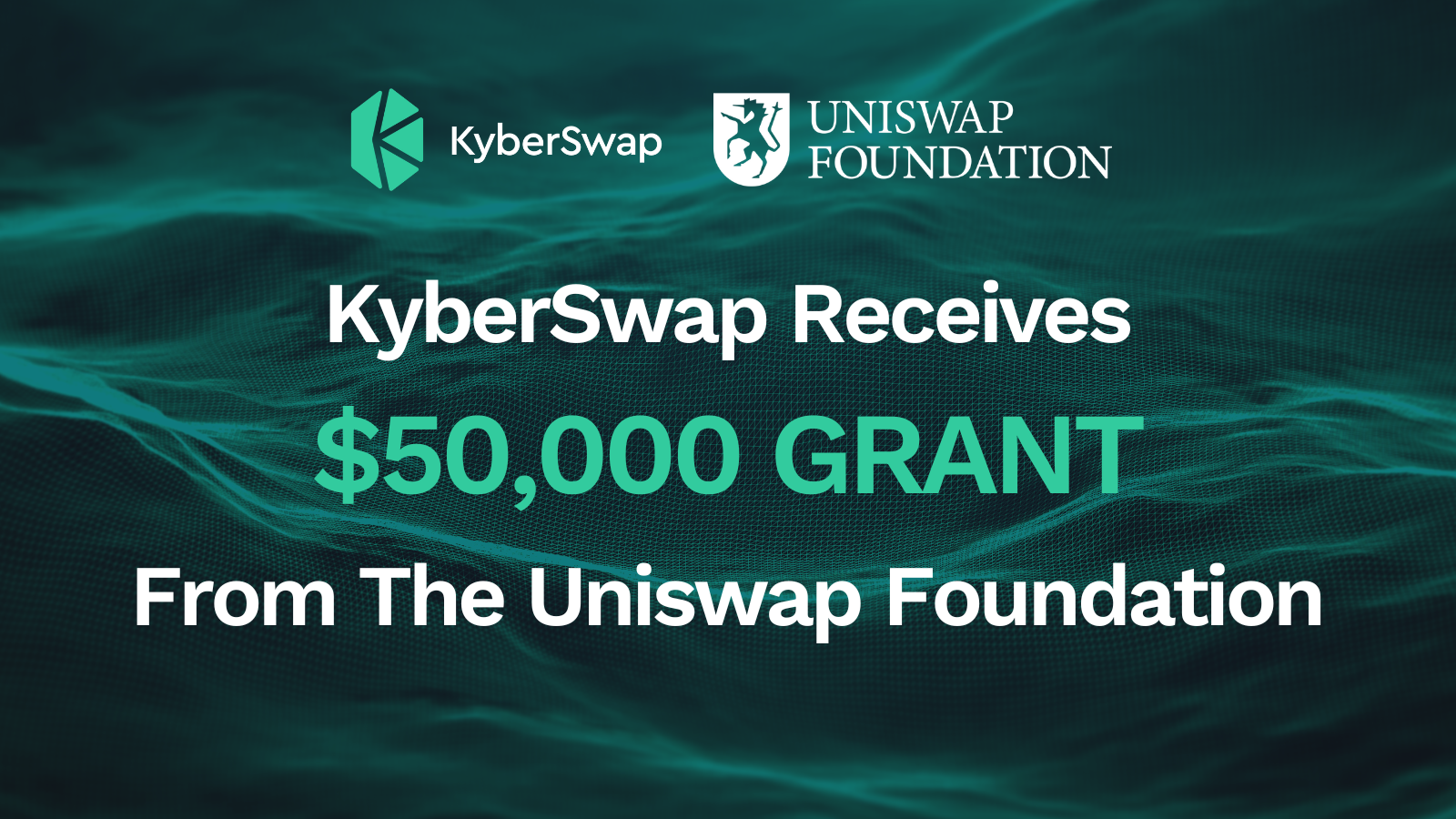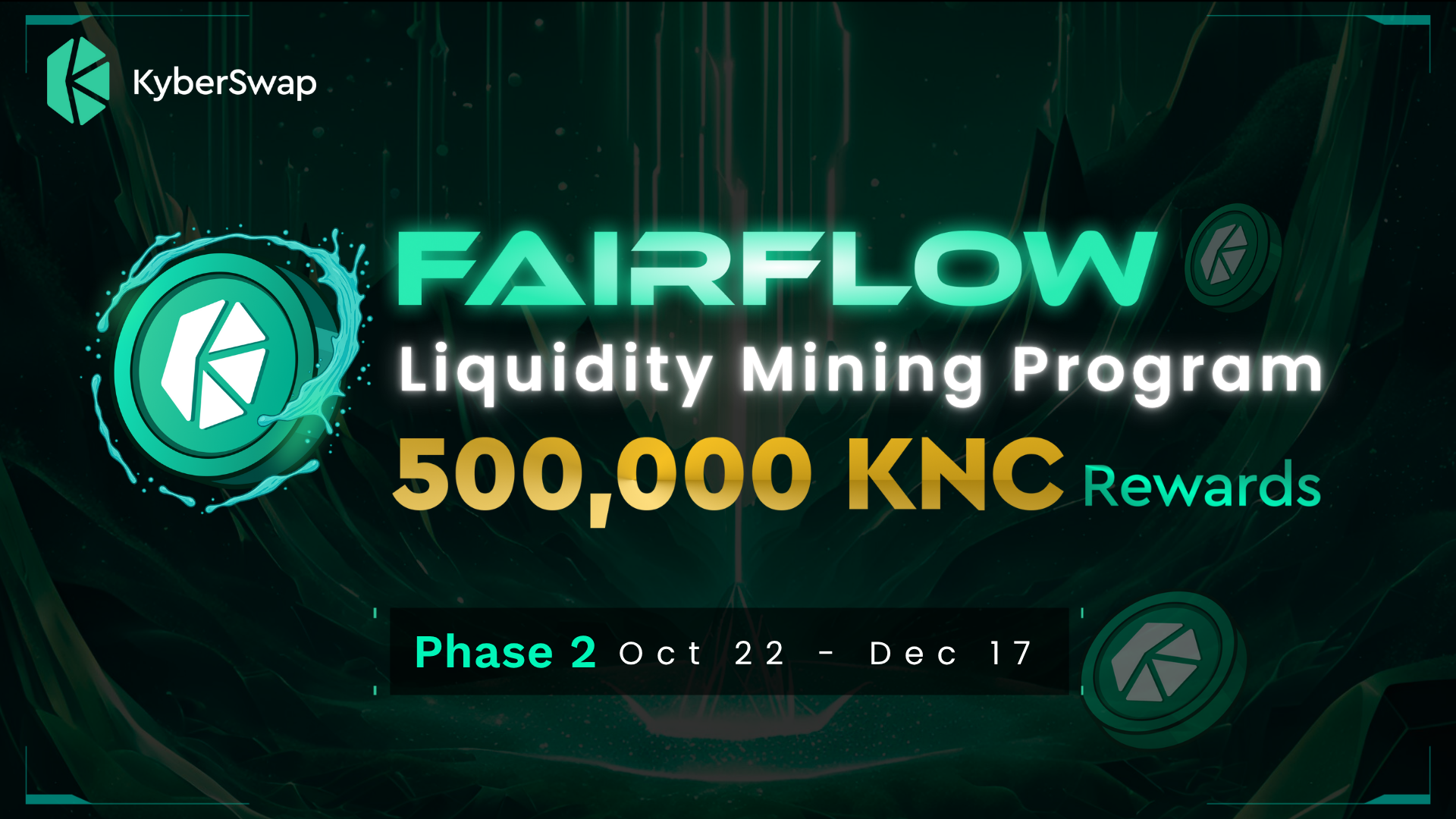
Cryptocurrency as an industry is rapidly gaining mainstream awareness in recent years. One popular use case is generating passive income, by which there are several ways of doing so.
One such method is through the utility of Crypto Staking. This is a popular method among many crypto holders, as they make use of their current assets to generate income.
Crypto staking options are widely available both on a number of Centralised and Decentralised platforms, so it is not only a convenient option but it also has suitable appeal to crypto holders depending on their risk appetite.
While crypto staking is a common practice , there are still significant risks that every investor should know.
In this article, we will take a deeper look into the potential risks of staking your crypto tokens to ensure that you are well-informed in the topic of staking, and what you should be aware of before making any investment decisions that might put your crypto tokens at risk.
But first, let us get back to basics and answer a fundamental question:
What exactly is crypto staking?
What is Crypto Staking?
Here’s a quick run-through for some who might be unfamiliar with staking crypto tokens.
The 2 most common types of staking today are that in Proof of Stake (PoS) blockchains, and in Decentralised Finance (DeFi) protocols.
Staking in PoS blockchains refers to you locking your tokens as collateral, potentially risking them, in an effort to secure the blockchain.
On the other hand, staking in DeFi protocols refer to receiving emissions as rewards from the protocol for locking your tokens instead of selling them.
Staking in Proof of Stake (PoS) blockchains
Staking is commonly known as contributing and “locking up” the native token of the PoS network.
PoS networks require users to stake a share of their native tokens to keep the network running and perform various network functions, such as validating of transactions.
Participants can lock or “stake” their tokens and the protocol randomly assigns the right to one of the many validators to validate the next block.
When you stake your tokens, you are contributing to the running of the blockchain and maintaining its security. As an incentive for helping to secure the network, typically stakers will be rewarded with crypto token rewards.
In practice, there are rather high barriers to entry to being a validator, such as a minimum number of crypto tokens to be staked. Thus, most of the time you will be delegating your tokens to another validator.
This validator then acts as a custodian to manage the blockchain on behalf of delegators, ensuring its security and consensus. This is also important to remember as a potential risk we will explore later.
Many Centralised Exchanges (CEX) also offer staking services for users, for increased convenience and lowered risks of wallet attacks and validator slashing.
For example, if you were to stake tokens yourself, you would have to go through a number of steps. You would have to create your own wallet, note down the seed phrase and keep them in a secure place, move your funds manually and choose trustworthy validators to delegate to. It can be quite a hassle for someone new to crypto.
With centralised exchanges, you can simply stake your cryptocurrency tokens in the exchange simply with a few clicks, within the platform itself.
Staking in DeFi Protocols
There are also other Decentralised Exchanges (DEX) and protocols that offer staking of tokens in their reward pools directly in exchange for rewards.
The protocol also benefits by having a larger proportion of their tokens being ‘locked’, thus having lower selling pressures in the market.
Some of the major DeFi protocols that offer staking include AAVE, Maker DAO, Curve, KyberDAO and many more.
Why Stake?
We have explored some key benefits of staking for retail investors, but let us go in depth.
Why would anyone want to stake and “lock away” their tokens?
Maintaining the security of the blockchain:
First, staking incentivises the maintenance of the network’s security through ownership.
The PoS blockchain selects participants that have staked and locked away their tokens to verify new blocks of data being added to the network. When they do so honestly, these selected participants get rewarded.
If the participants act maliciously, they will risk having their staked tokens slashed, where a share of their staked tokens would be lost.
Some acts that can be considered malicious or dishonest include: Proposing multiple blocks in a single slot, or submitting contradictory attestations (votes sent across the network, after ensuring if a nevlock is valid).
And so in this way, staking strengthens the security of the blockchain against attacks. As more tokens are staked, more tokens are then required to control a majority of the network.
Staking rewards and passive income:
Staking also allows you to put your tokens to work and earn rewards, usually above the rates you might be accustomed to in banks and fixed deposits.
This allows for passive income generation, as you can earn a decent daily passive income while putting your idle tokens to work.
Governance:
Finally, staking a protocol’s token often gives you access to governance rights.
This means that when you stake a protocol’s governance token, you can participate and vote in governance related proposals for the protocol, and in turn play a role in influencing the protocol’s future actions.
This is relevant for DEXs or similar protocols, when you stake their governance token to participate in governance proposals and earn staking yields.
For example, you can stake KNC on KyberDAO to participate in and vote on various governance proposals for KyberDAO.
An alternative is staking on CEXs, where we can delegate to them as validators for a blockchain.
For example, when we stake via a third party CEX staker like Binance, delegating our tokens to them allows us to be part of the network’s validation mechanism.
Airdrops:
In many blockchains, new protocols offer airdrops to users who have staked tokens to the blockchain. This is done as a reward for their support and contributions to securing the chain.
What’s more, these airdrops can sometimes be worth a hefty sum.
Protocols such as Osmosis and Juno launched their chains with airdrops to users that staked the Atom token, rewarding their staking with generous token airdrops.
Given all these benefits, should we then put all our money and tokens into staking?
Well, not quite.
Before you jump into staking your tokens, there are a number of risks from staking that you need to know.
After you fully understand these risks, you will have a much better picture of both the pros and cons of staking to make a well informed decision.
Staking Risk 1: Liquidity risk
The first important staking risk to be aware of is the liquidity risk you will be exposed to when you stake.
When you stake tokens, blockchains and protocols typically have a lockup period where you will be unable to access your staked tokens.
This is done to prevent large-scale pump and dump scenarios, where users with large amounts of a certain token can simply stake, earn rewards, withdraw them and sell all the staked tokens at once, causing negative price pressures on the token.
As such, lockup periods are common across staking in blockchains and protocols alike. However, this then poses a risk to the user.
Say you have an urgent need to access the staked tokens to gain some liquidity. If the platform has a lock-up period implemented, there would unfortunately be no way you can gain access to them within a short time.
This is one key risk to take note of, especially if you are prone to liquidity crunches. If available, staking without lockups would be a good way to mitigate this risk.
Not all platforms have a lock-up period. For example, KyberDAO allows stakers to have full control over their funds, and stakers are free to deposit and withdraw your KNC tokens anytime. However it is important to note that in the volatile world of crypto, time is of essence. Even the few minutes taken to withdraw your funds from a staking platform can result in a loss of potential profit.
Speaking of volatility, this brings us to our next point.
Staking Risk 2: Market and price fluctuations risk
Volatility, or the risk of market prices and token price fluctuations is another significant risk of staking.
Imagine trying to access the staked tokens to sell them at an all time high price, only to see the token price plunge after 28 days of unstaking.
This is a very practical risk for all investors to take note of, especially if you have a shorter-term time horizon for the token investment.
Staking Risk 3: Poor tokenomics + inflation
Before you stake a token, another aspect that you should look into is the project’s staking rewards and tokenomics.
Looking for tokens with the highest staking yields might not always be the best choice for investors.
When a protocol or blockchain allocates a large portion of their tokenomics to staking rewards, this also runs the risk of high inflation of the token.
More tokens will be regularly distributed into the total token circulating supply.
A basic economic principle teaches us that a constantly increasing supply would put a downward pressure on the token price.
As such, there should be an increasing demand for the token to maintain the prices of the token over time.
If staking rewards are excessive without a strong token use case and corresponding increasing demand for the token, these are red flags that you need to be wary of.
You might just end up with large holdings of a particular token, but of little value.
Look beyond the potential yields you can earn from staking, but at the fundamentals of the project and the token itself.
Staking Risk 4: Validator slashing risk
Another common risk is that of validation slashing.
The Proof of Stake consensus mechanism requires participants to behave responsibly for the overall good of the ecosystem.
To encourage responsible behaviour, blockchains penalize validators if they fail to validate properly, by slashing the value of their staked tokens and/or rewards.
The two most common offences are (i) double-signing or (ii) going offline and having downtime when the validator should be available to confirm a new block.
The best way to mitigate against this risk is to do your own research before choosing the validator to delegate to.
Well-established validators who have a proven history of 0 downtime, or validators that you know to be strong contributors to the ecosystem are less likely to act maliciously.
Staking Risk 5: Protocol attack risk
Finally, a common but often overlooked risk is an attack on the protocols or DEXs itself.
When you stake tokens in DeFi protocols or DEXs, there are often risks of the protocol being attacked by malicious hackers, losing your funds as a result.
Another risk is the founders of the protocol mismanaging the treasuries, or worse, absconding with the funds in the protocol. This is also commonly known as a ‘rug’ in crypto terms.
For the latter, it is an unfortunate event that occurs far too many times in crypto. You will need to evaluate the team’s history and experience to make a judgement on their credibility.
For the former, this is also a risk that everyone has to take on when deciding to engage and stake with protocols. This can be mitigated by diversifying your staking efforts, to avoid putting all your eggs into one basket.
The risk might not be as high, but it is definitely still significant given its potential ramifications.
Final Thoughts
Staking is a common tactic used to earn passive income in crypto and decentralised finance today, but being commonly used does not make it risk free.
There are many inherent risks that are easy to overlook at the start of your crypto journey.
While there are many rewards and benefits from staking, hopefully this article has managed to shed some light on its potential drawbacks as well.
Furthermore, staking is also not the only way to earn from your tokens.
To mitigate some risks (such as the lockup period and validator slashing), you can also consider providing liquidity and earning yields from DeFi protocols like KyberSwap.
There are no risk free investments. But with this information on hand, potential stakers can weigh the risks and benefits of staking to make an informed decision.
If you are keen to use your crypto holdings to generate additional income, with fewer risks from staking, there are alternatives. There are many DeFi platforms that offer liquidity mining as another way for token holders to make use of their current assets. Also known as Yield Farming, KyberSwap is one such platform that enables liquidity providers to add liquidity to designated pools in return for reward incentives.
Check out our article on Yield Farming in Crypto to learn more about Liquidity Mining!
You can try farming on liquidity pools on KyberSwap, earning yield but with much greater flexibility.
As an investor, always DYOR — Do Your Own Research — before investing. Getting a better understanding of the industry and sector that includes a specific project is a helpful starting point. If you are keen to know more about decentralized finance and topics around it, check out Kyber Academy now!



